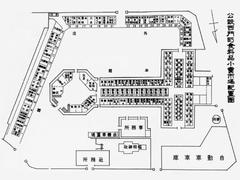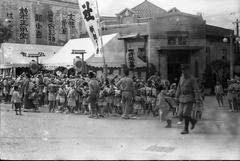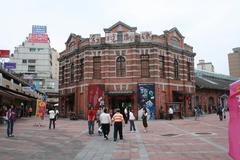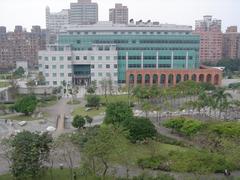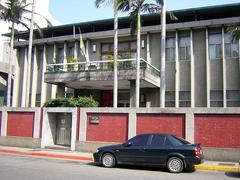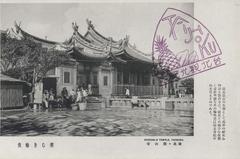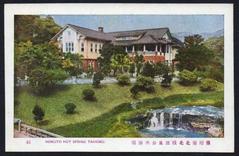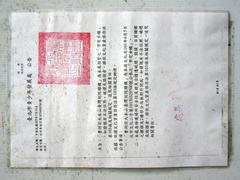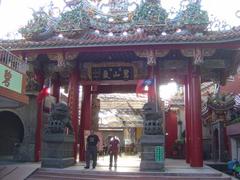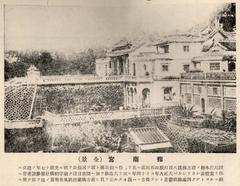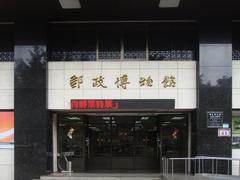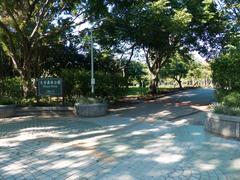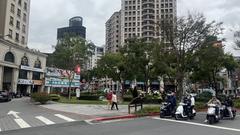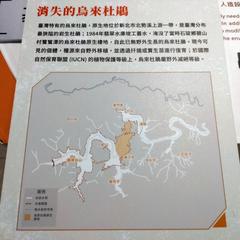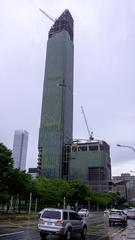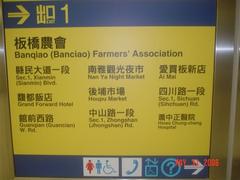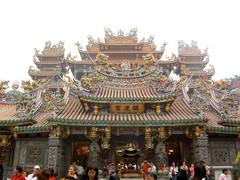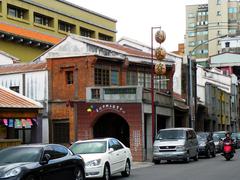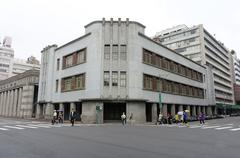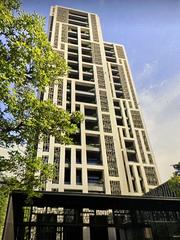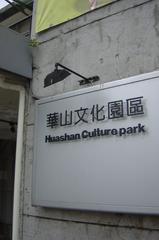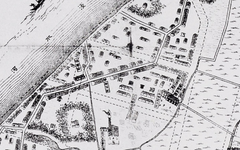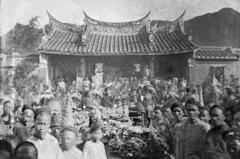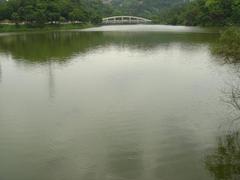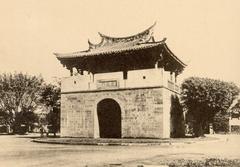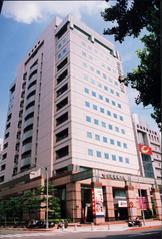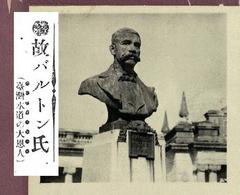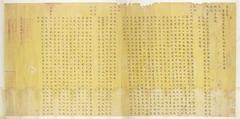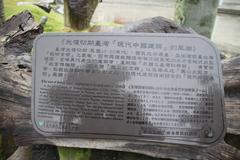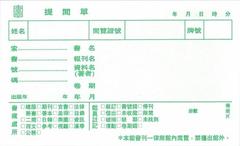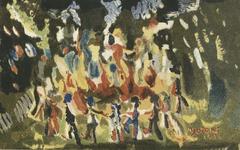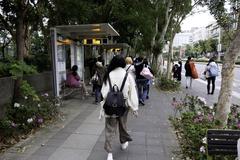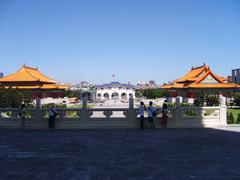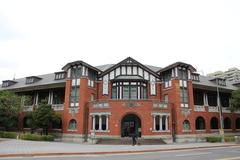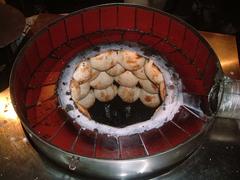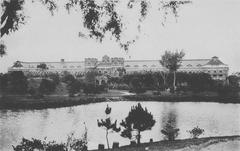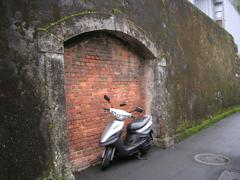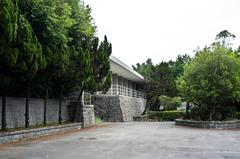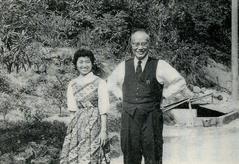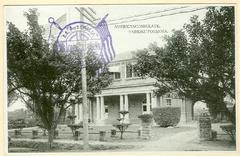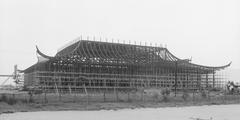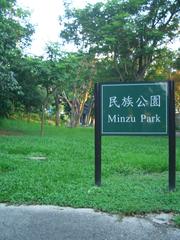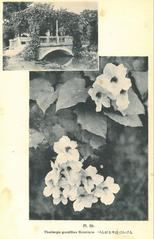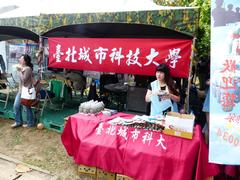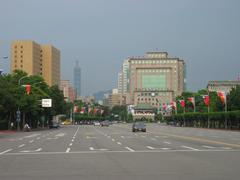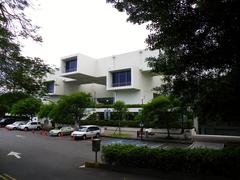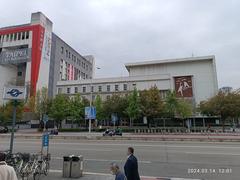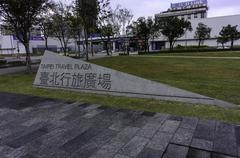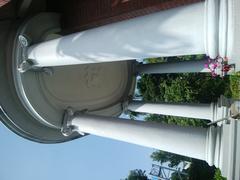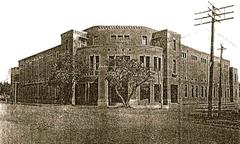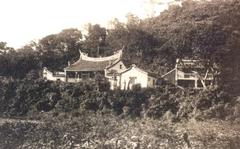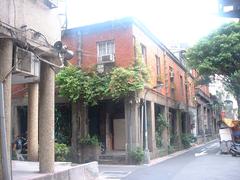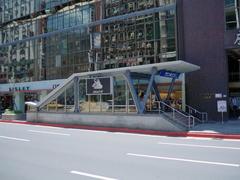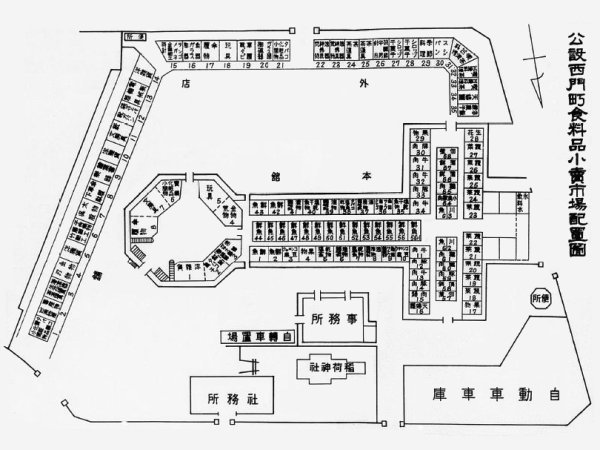
Visiting Guide to 西門紅樓 in Taipei, Taiwan
Publishing Date: 17/07/2024
Introduction to 西門紅樓
The Ximending Red House in Taipei is a prominent cultural and historical landmark that has witnessed the city’s evolution over more than a century. Initially constructed in 1908 during the Japanese colonial period, the building was designed by Japanese architect Kondo Chojiro and served as Taipei’s first public market. Its unique octagonal structure and red brick façade, inspired by traditional Japanese theater and constructed with bricks imported from Holland, quickly became a distinctive element of the Wanhua District. Over the decades, the Red House transformed from a bustling market to a theater and cinema, reflecting the social and cultural shifts of Taipei. Post-World War II, it became a center for entertainment, showcasing Taiwanese operas and screening Hollywood films. Despite facing a period of decline in the late 20th century, the Red House was revitalized by the Taipei City Government in the early 2000s and now serves as a vibrant hub for arts, culture, and creativity. Today, it stands as a testament to Taipei’s resilience and commitment to preserving its heritage while embracing modernity (Discover the Ximending Red House).
Contents Overview
- Introduction
- Historical Background and Evolution
- A Century of Transformation - The Story of the Ximending Red House
- Early Days - A Market at the Heart of a New District (1908-1945)
- Post-War Years - Entertainment and Escapism (1945-1990s)
- A Period of Decline and Uncertainty (1990s-2000s)
- Rebirth as a Cultural Hub (2000s-Present)
- Architectural Significance and Unique Features
- Octagonal Structure - A Symbol of Prosperity and Good Fortune
- Cross-Shaped Interior - A Fusion of Functionality and Symbolism
- Brick Construction - A Departure from Tradition
- Baroque-Style Details - A Touch of European Elegance
- Open-Air Courtyard - A Traditional Gathering Place
- Adaptive Reuse - Preserving History for the Future
- The Red House Theater - A Stage for Artistic Expression
- A Beacon in Ximending - Illuminating the Night
- Visitor Information
- Ticket Prices and Opening Hours
- Travel Tips
- Current Use and Visitor Information
- The Red House Theater
- Creative Boutique Market
- Exhibitions and Events
- Dining and Cafes
- Location and Access
- Opening Hours
- Admission
- Tips for Visitors
- Nearby Attractions
- Ximending Shopping District
- Longshan Temple
- Bopiliao Historic Block
- Accessibility Information
- Special Events and Guided Tours
- Photographic Spots
- Conclusion
- FAQ
Discover the Ximending Red House - History, Visiting Hours, and Tickets
Introduction
The Ximending Red House is a historical and cultural landmark in Taipei, known for its distinctive architecture and rich history. This guide will provide you with all the information you need to plan your visit, including visiting hours, ticket prices, and travel tips.
Historical Background and Evolution
A Century of Transformation - The Story of the Ximending Red House
The Ximending Red House stands as a proud testament to Taipei’s ever-evolving narrative. Its distinctive octagonal structure, crowned with a striking octagonal tower, has witnessed over a century of change, mirroring the city’s own journey through time.
Early Days - A Market at the Heart of a New District (1908-1945)
The Red House’s story began in 1908, during the Japanese colonial era. Constructed as Taipei’s first public market, it was designed by Japanese architect Kondo Chojiro, who drew inspiration from the traditional Japanese theater style. The building’s unique red brick facade, imported from Holland, quickly earned it the moniker “Red House.”
This bustling marketplace, officially named “Taipei Market,” played a pivotal role in the development of the then-newly established Wanhua District. It quickly became the social and commercial hub of the area, offering a diverse array of goods, from fresh produce and household items to imported fabrics and luxury goods.
Post-War Years - Entertainment and Escapism (1945-1990s)
Following World War II and the handover of Taiwan to the Republic of China, the Red House underwent a significant transformation. The once-bustling market transitioned into a space for entertainment and leisure.
- A Theater for the People: The building housed a theater, showcasing Taiwanese operas and Chinese dramas, becoming a cultural haven for the local community.
- Cinema’s Golden Age: Later, it was converted into a cinema, screening popular Taiwanese and Hollywood films, offering a window to the world and a temporary escape from the realities of the time.
A Period of Decline and Uncertainty (1990s-2000s)
The late 20th century saw the Red House facing a period of decline. The rise of modern shopping malls and entertainment complexes drew crowds away, leaving the building underutilized and facing an uncertain future.
Rebirth as a Cultural Hub (2000s-Present)
Recognizing the Red House’s historical and cultural significance, the Taipei City Government designated it as a historical landmark in 1997. This marked the beginning of a new chapter for the iconic building.
- Restoration and Revitalization: Extensive restoration efforts were undertaken to preserve the Red House’s unique architecture and heritage.
- A Creative Hub is Born: In 2008, after a period of meticulous restoration, the Red House reopened its doors, transformed into a vibrant center for arts, culture, and creativity.
Today, the Ximending Red House stands as a testament to Taipei’s rich history and its evolving cultural landscape. It serves as a dynamic platform for:
- Showcasing Local Artists: The Red House hosts a diverse range of exhibitions, showcasing the works of local artists, designers, and craftspeople.
- Performance Art Haven: Its theater space has been revitalized, hosting a variety of performances, from traditional Taiwanese opera to contemporary dance and music.
- Creative Market: The surrounding plaza comes alive on weekends with a bustling creative market, offering unique handmade goods, crafts, and souvenirs.
Visitor Information
Ticket Prices and Opening Hours
- Tickets: Entry to the Red House is free, but some special exhibitions and events may have an admission fee.
- Opening Hours: The Red House is open daily from 11:00 AM to 9:30 PM.
Travel Tips
- Getting There: The Red House is conveniently located near Ximen Station on the Taipei Metro.
- Best Time to Visit: Weekends are bustling with activities, but weekdays offer a quieter experience.
Nearby Attractions
- Longshan Temple: A historic temple located nearby.
- Ximending Shopping Area: A vibrant shopping and entertainment district.
Conclusion
The Ximending Red House is more than just a historical site; it is a living testament to Taipei’s resilience and creativity. Whether you’re interested in its history, attending an art exhibition, or simply exploring the area, the Red House offers something for everyone.
FAQs
- Is there an entry fee for the Ximending Red House?
- Entry is free, but some special events may have a fee.
- What are the opening hours?
- The Red House is open from 11:00 AM to 9:30 PM daily.
Call to Action
Plan your visit to the Ximending Red House today! Download our mobile app Audiala for more travel guides, check out our related posts, and follow us on social media for updates.
Discover the Architectural Significance and Unique Features of the Ximending Red House in Taipei
Introduction
The Ximending Red House stands as a testament to Taiwan’s architectural evolution and cultural fusion, blending Western influences with traditional Taiwanese aesthetics. This article explores its unique features, historical context, and practical visitor information, making it a must-visit for anyone interested in architecture, history, or simply experiencing the charm of Taipei’s vibrant Ximending district.
Architectural Significance and Unique Features
Octagonal Structure - A Symbol of Prosperity and Good Fortune
The most striking feature of the Red House is its distinctive octagonal shape. This design element, rarely seen in traditional Taiwanese architecture, was inspired by the popular Western architectural style of the early 20th century. The octagon, often associated with the Bagua symbol in Feng Shui, represents prosperity and good fortune, reflecting the building’s original purpose as a bustling market.
Cross-Shaped Interior - A Fusion of Functionality and Symbolism
Contrasting the octagonal exterior, the Red House features a cross-shaped interior. This design element served a practical purpose, dividing the market into distinct sections for easy navigation. Symbolically, the cross-shape echoes the layout of traditional Chinese courtyard houses, subtly blending Eastern and Western architectural concepts.
Brick Construction - A Departure from Tradition
The Red House’s construction materials also set it apart from traditional Taiwanese buildings of its time. While wood was the primary building material in early 20th century Taiwan, the Red House was constructed using red bricks imported from Fujian, China. This choice reflects the influence of Western architecture and adds to the building’s durability and unique aesthetic appeal.
Baroque-Style Details - A Touch of European Elegance
While the overall design incorporates elements of both Eastern and Western architecture, the Red House’s decorative details lean towards a Baroque style popular in Europe during the 17th and 18th centuries. This influence is evident in the building’s arched windows, decorative cornices, and the intricate patterns adorning its roof ridges. These details add a touch of European elegance to the Red House, further highlighting the fusion of architectural styles.
Open-Air Courtyard - A Traditional Gathering Place
At the heart of the Red House lies an open-air courtyard, a common feature in traditional Taiwanese and Chinese architecture. This space served as a central gathering point for market-goers in the past, fostering a sense of community and social interaction. Today, the courtyard hosts various events and performances, keeping the tradition of communal gathering alive.
Adaptive Reuse - Preserving History for the Future
The Ximending Red House stands as a successful example of adaptive reuse, a testament to the building’s enduring relevance and architectural significance. Over the years, it has transitioned from a market to a theater and now serves as a cultural hub. This continuous adaptation ensures the building’s preservation while allowing it to remain a vibrant part of Taipei’s cultural landscape.
The Red House Theater - A Stage for Artistic Expression
Within the Red House complex, the octagonal main building houses a small theater, adding another layer to its cultural significance. This intimate performance space has hosted countless plays, musical performances, and cultural events, nurturing local talent and providing a platform for artistic expression.
A Beacon in Ximending - Illuminating the Night
As night descends on Ximending, the Red House transforms into a beacon of light, illuminating the bustling district. The building’s warm glow, emanating from its many windows and doorways, creates a captivating ambiance, drawing visitors to explore its cultural offerings and experience the vibrant nightlife of Ximending.
Visitor Information
For those planning a visit, the Ximending Red House is open daily from 11:00 AM to 9:30 PM. Admission is free, but certain events and performances may require tickets. It’s advisable to check the official Ximending Red House website for the latest information on visiting hours and ticket prices.
Travel Tips
- Getting There: The Red House is easily accessible via the Taipei Metro, with the closest station being Ximen Station (Exit 1).
- Nearby Attractions: While in the area, consider visiting the vibrant Ximending shopping district, Lungshan Temple, and the Taipei Cinema Park.
- Accessibility: The Red House is wheelchair accessible, ensuring that all visitors can enjoy its historic and cultural offerings.
Special Events and Guided Tours
The Red House frequently hosts special events, including art exhibitions, craft markets, and live performances. Guided tours are also available, providing deeper insights into the building’s history and architectural significance. Photographers will find numerous spots to capture the Red House’s unique beauty, especially during the evening when it is illuminated.
Conclusion
The Ximending Red House is not merely a building; it’s a living testament to Taiwan’s history, culture, and architectural ingenuity. Its unique blend of Eastern and Western influences, combined with its enduring presence in Taipei’s ever-evolving landscape, makes it a truly remarkable landmark. Be sure to visit this iconic site to fully appreciate its rich heritage and ongoing cultural contributions.
FAQs
Q: What are the Ximending Red House visiting hours?
A: The Ximending Red House is open daily from 11:00 AM to 9:30 PM.
Q: Do I need tickets to enter the Ximending Red House?
A: Admission is free, but certain events and performances may require tickets. Check the official website for the latest information.
Q: How do I get to the Ximending Red House?
A: The Red House is easily accessible via the Taipei Metro, with the closest station being Ximen Station (Exit 1).
Q: Are there any nearby attractions to visit?
A: Yes, nearby attractions include the Ximending shopping district, Lungshan Temple, and the Taipei Cinema Park.
Q: Is the Ximending Red House wheelchair accessible?
A: Yes, the Red House is wheelchair accessible, ensuring that all visitors can enjoy its historic and cultural offerings.
Call to Action
Plan your trip to the Ximending Red House today and immerse yourself in its unique architectural beauty and cultural significance. For more travel tips and updates, download our mobile app Audiala, check out other related posts, or follow us on social media.
Summary and Final Thoughts
The Ximending Red House is more than just a historical building; it is a dynamic symbol of Taipei’s cultural and architectural heritage. From its origins as Taipei’s first public market in 1908 to its current role as a cultural hub, the Red House has continually adapted to meet the changing needs of the city and its people. Its unique architectural features, including the octagonal structure and cross-shaped interior, reflect a blend of Eastern and Western influences that make it a standout landmark in Taipei. The building’s successful transformation into a space for artistic expression and community gatherings underscores its enduring relevance and significance. Whether you are drawn by its rich history, architectural beauty, or vibrant cultural offerings, the Ximending Red House offers an enriching experience for all visitors. Plan your visit today to immerse yourself in the unique charm and historical depth of this iconic Taipei landmark (Complete Guide to Visiting the Ximending Red House).
